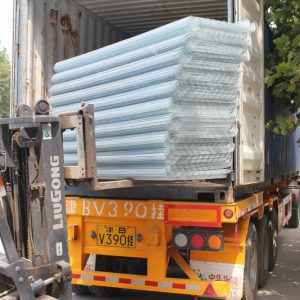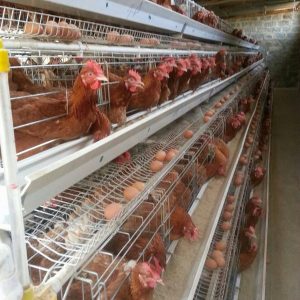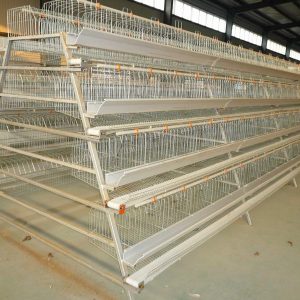
How to analyze the performance indicators of laying hens?
For a long time, in laying hens, people have mainly paid attention to the laying rate of laying hens at the peak period, but the length of the egg laying cycle (average daily egg production above 55g/feather) is often overlooked. In fact, under the premise that the factors of laying hen breeds and feed material prices are consistent, the most important indicators that affect the breeding efficiency of laying hens are the egg production cycle, followed by the feed-to-egg ratio, and then the feed unit price, egg production rate, and egg weight. And the death rate, of course, these indicators are not isolated, they are all related.
Here are some data to help analyze: assuming corn 1.8 yuan/kg, soybean meal 3.5 yuan/kg, wheat bran 1.4 yuan/kg, chick feed 2.38 yuan/kg, young chicken early feed 2.16 yuan/kg, late feed 2.0 yuan/ kg, laying hen material 2.2 yuan/kg, chicks 3 yuan/feather, eggs 7.0 yuan/kg, and hens 7 yuan/kg.
For intuitive and convenient analysis, we divide the laying stage of laying hens into three stages: input period (cultivation period), cost recovery period and profit period.
Input period (breeding period)-0-165 days old: laying hens from chicks to egg production rate of more than 65% (at this time egg income and feed expenditure are basically the same) takes about 165 days, the cumulative consumption of feed is about 10kg, The cost is about 22 yuan/bird, the chick + vaccine + medicine is about 6 yuan/bird, other expenses are about 1 yuan/bird, and the total cost is 29 yuan/bird; the egg production is about 0.4kg/bird, which is 2.8 yuan, and the chicken income is 14.2. Yuan (2.2kg*7yuan/kg*92%——survival rate during egg production period), with a total income of 17 yuan/feet; the balance between the two, the net expenditure during the cultivation period is 12 yuan/feather.
Cost recovery period-166-293 days of age: the average feed-to-egg ratio at this stage is calculated at 2.1:1, and other expenditures are calculated at 0.02 yuan/feet per day. The egg production rate is more than 94%, and the egg weight is 58.5g/piece, daily average Egg production of more than 55g/bird, daily profit of 0.1109 yuan/bird (0.055*7-0.1155*2.2-0.02), it takes 126 days to recover the cost of 12 yuan; it usually takes 20 days to raise the egg production rate from 65% to 94%, so The cost recovery period is 293 days old.
Profit period-after 293 days of age: after 293 days of age, the average egg laying peak has passed, the egg production rate is generally 88-90%, the egg weight is about 63-64g, and the average daily egg production is about 56.7g/ The average ratio of feathers to eggs is calculated as 2.2:1. The daily profit is 0.1026 yuan/feet (0.0567*7-0.1247*2.2-0.02), and the average monthly profit is 3.08 yuan.
It can be seen that the profit of laying hens is after the peak of egg production. If the daily egg production is more than 55g/feather, the longer the maintenance time, the more profit.
Feed-to-egg ratio, feed unit price: The feed metabolic energy level is the main factor that determines the feed-to-egg ratio (provided that the nutritional balance) is also the main factor that affects the feed unit price. The feed-to-egg ratio of feeds with different metabolic energy levels is relatively large, ideally it can be controlled within 2.05:1, the high is 2.5-2.6:1, the difference is more than 0.4:1, according to the calculation, the feed-to-egg ratio is different by 0.2: 1 The unit price of different feeds is about 0.1 yuan/kg. Calculated based on the annual egg production of 20kg, high-energy level feed can save feed costs by about 4.2 yuan/feather (20*2.1*2.2-20*2.3*2.1).
Egg production rate: The difference in average annual egg production rate due to feed, management and other non-disease factors generally does not exceed 5%. Calculated based on the annual egg production of 20kg, an increase in egg production rate of 5% is equivalent to more than 1kg of eggs per pigeon. At the same time, it also consumes more feed 2.2kg per pigeon, and net income increases by 2.16 yuan per feather (1*7-2.2*2.2).
Egg weight: The difference in egg weight is generally 2-3%. Similarly, the increase in egg weight and the corresponding increase in feed consumption, so the net income increased due to the increase in egg weight is 0.86-1.3 yuan / feather.
Dead panning rate: To exclude epidemic infections, the annual dead panning rate during egg production can generally be controlled at 5-10%. Calculating based on the elimination of chickens at 8 yuan/feather, reducing the 5% dead panning rate can increase income by 0.4 yuan/bird.
In summary, the most effective way to improve the efficiency of laying hens is to extend the number of days of egg production above 55g/feather; designing a reasonable dietary metabolic energy level, controlling feed unit prices and reducing the feed-to-egg ratio are also ways to improve laying hen breeding Important measures of efficiency.


